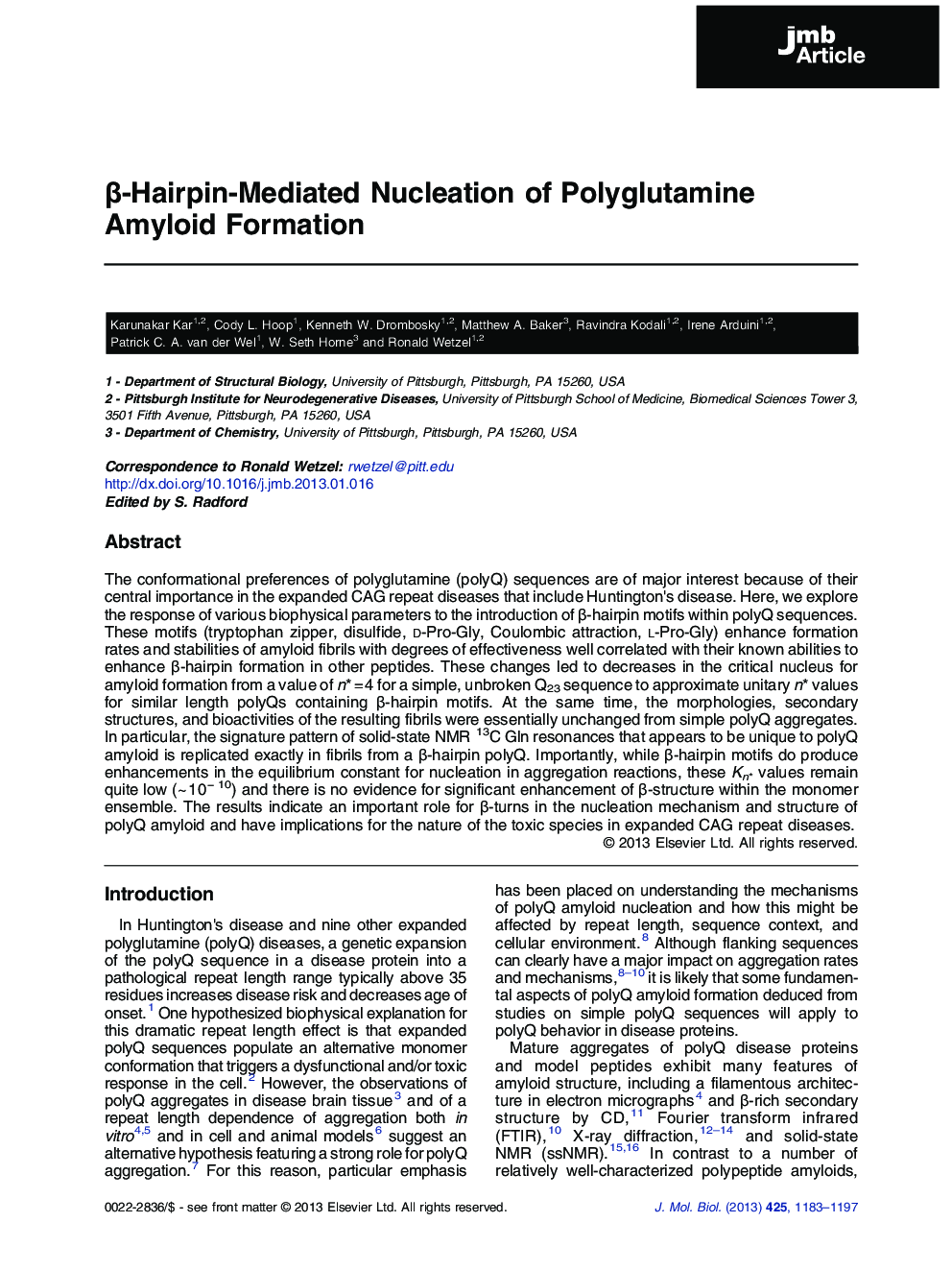| کد مقاله | کد نشریه | سال انتشار | مقاله انگلیسی | نسخه تمام متن |
|---|---|---|---|---|
| 2184826 | 1095935 | 2013 | 15 صفحه PDF | دانلود رایگان |

The conformational preferences of polyglutamine (polyQ) sequences are of major interest because of their central importance in the expanded CAG repeat diseases that include Huntington's disease. Here, we explore the response of various biophysical parameters to the introduction of β-hairpin motifs within polyQ sequences. These motifs (tryptophan zipper, disulfide, d-Pro-Gly, Coulombic attraction, l-Pro-Gly) enhance formation rates and stabilities of amyloid fibrils with degrees of effectiveness well correlated with their known abilities to enhance β-hairpin formation in other peptides. These changes led to decreases in the critical nucleus for amyloid formation from a value of n* = 4 for a simple, unbroken Q23 sequence to approximate unitary n* values for similar length polyQs containing β-hairpin motifs. At the same time, the morphologies, secondary structures, and bioactivities of the resulting fibrils were essentially unchanged from simple polyQ aggregates. In particular, the signature pattern of solid-state NMR 13C Gln resonances that appears to be unique to polyQ amyloid is replicated exactly in fibrils from a β-hairpin polyQ. Importantly, while β-hairpin motifs do produce enhancements in the equilibrium constant for nucleation in aggregation reactions, these Kn* values remain quite low (~ 10− 10) and there is no evidence for significant enhancement of β-structure within the monomer ensemble. The results indicate an important role for β-turns in the nucleation mechanism and structure of polyQ amyloid and have implications for the nature of the toxic species in expanded CAG repeat diseases.
Graphical AbstractFigure optionsDownload high-quality image (187 K)Download as PowerPoint slideHighlights
► β-Hairpin motifs added to short polyQ sequences greatly enhance aggregation rates.
► The enhancing effect is primarily due to a change in critical nucleus from 4 to 1.
► The amyloid structure of mutants is unchanged by solid-state NMR, electron microscopy, Fourier transform infrared spectroscopy, and bioactivities.
► Even with these added mutations, the monomeric polyQs are disordered in solution.
► The β-hairpin conformation is thus quite rare, consistent with a in nucleation.
Journal: Journal of Molecular Biology - Volume 425, Issue 7, 12 April 2013, Pages 1183–1197